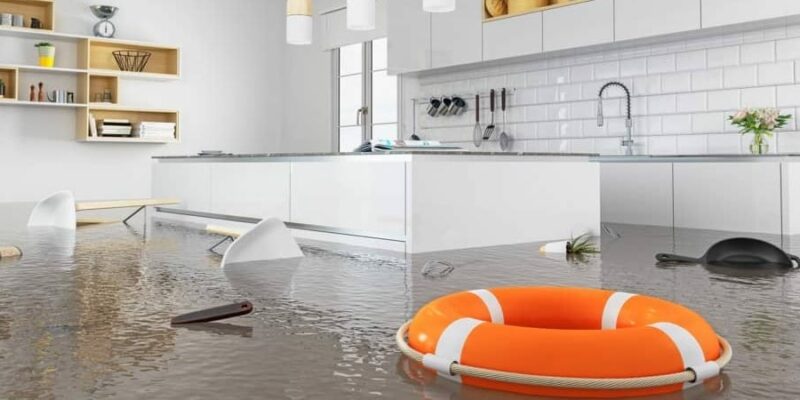Water damage can leave a significant impact on your abode, a reality starkly attested by the imposing figures from the insurance industry.
According to a recent report by the Insurance Information Institute, around one in 60 insured homes makes a property damage claim due to water damage or freezing each year. This underscores the extent of threat that water damage poses to homes and elucidates the dire need for restoration.
Understanding Water Damage
Before diving into water restoration solutions, it is crucial to comprehend what entails water damage. It refers to irrevocable losses caused by intruding water that invades and compromises your dwelling’s structure and contents.
Its repercussions range from rotting wood and rusting steel to destroying laminated equipment and furniture. It is also infamous for creating conducive environments for mold growth, posing health hazards.
The Causes of Water Damage
A multiplicity of factors contributes to water damage. These might range from leaky faucets and bursting pipes to storms, floods, and hurricanes.
Equipment malfunction such as a faulty washing machine could inundate your home with water. Seepage through basement walls due to heavy rain or ground water build-up can also culminate in substantial structural damage.
Initial Response: Mitigate Further Damage
Your immediate action upon noticing any form of water intrusion should be curbing its spread. This involves promptly identifying the source of the water and mitigating it if possible, such as turning off the main water supply in case of internal flooding.
Contact a Professional Water Restoration Company
Given the sophistication involved in water restoration, it is paramount that you engage experts in this domain. These professionals employ advanced tools and techniques to drain standing water, dry out the affected areas, sanitize your home and restore your property to its previous state.
Insurance Claims and Assistance
Damage from sudden or accidental water intrusion may be covered by your homeowner’s insurance. It is wise to familiarize yourself with the terms of your policy so you know what coverage you can expect in such a situation. Also, make sure to document the damage for evidence when lodging a claim.
Potential Health Risks
The hazards borne from unchecked water damage go beyond structural impairment. Prolonged presence of moisture sparks mold spores’ proliferation, which can cause severe respiratory problems if breathed in.
The Water Restoration Process
A comprehensive water restoration process involves multiple meticulous steps designed to tackle both the seen and unseen implications of water damage. From assessment and inspection to drying and dehumidification to sanitizing and cleaning, each step plays an integral role in ensuring your peace of mind returns.
Evaluation and Inspection
The first step typically entails a thorough evaluation of the extent of damage. The aim here is not just to identify all water-damaged areas but also assess any potential health risks such as black mold presence. This paves the way for a tailored restoration blueprint.
Water Extraction
Next comes draining any lingering water using cutting-edge extraction units. High-speed pumps are often employed to raze standing water, while vacuum units might be used to draw out moisture from soaked carpets and upholstery.
Drying and Dehumidification
Once the visible water is eradicated, attention turns to drying out the premises. Dehumidifiers and air movers work in tandem to drive out the residual moisture veiled within walls, floors, and furniture.
Cleaning and Sanitizing
The affected area will then undergo a rigorous cleaning process, aiming at eliminating any contaminants that might have seeped in with the water. The use of antimicrobial treatments is not uncommon in mitigating mold and bacteria proliferation. For further insights into this process, click here.
Restoration and Repairs
Repair works such as replacing distorted drywall or flooring characterize the final step in this restoration journey. Sometimes there could be a need for major reconstructions like rebuilding entire rooms.
Preventive Measures
Preventing water damage is far better than seeking to rectify it. Regular checks of your plumbing system, timely maintenance of appliances, sealing basement walls to keep out seepage and safeguarding your home from potent storms can go a long way in evading costly restorations.
Your Role in Water Restoration
You play a vital role in accentuating the effectiveness of a water restoration ordeal. From identifying early signs of water damage to liaising between insurance agencies and restoration companies, your actions contribute significantly to a speedy recovery.
The Onus Is on You
Grasping the basics of water restoration arms you with vital knowledge that could be key in salvaging your property from devastating water damage effects. It helps you react promptly when faced with such a crisis scenario and shields you from potential health risks.
In Conclusion
Understanding water restoration is crucial in ensuring the longevity of your home and the health of its occupants. Proactiveness coupled with knowledge can prove instrumental in mitigating water damage consequences, saving you substantial costs associated with restoration.













Comments